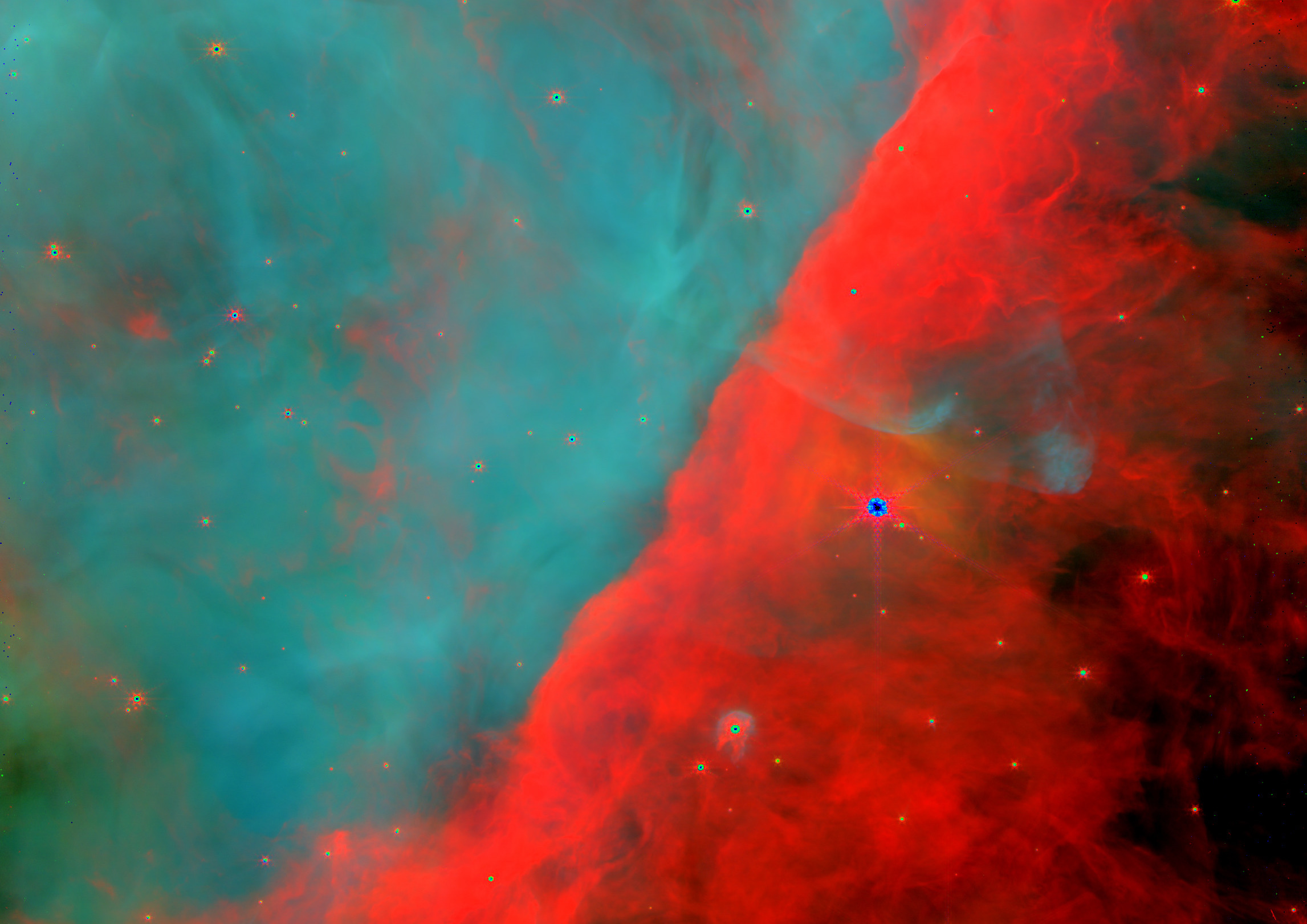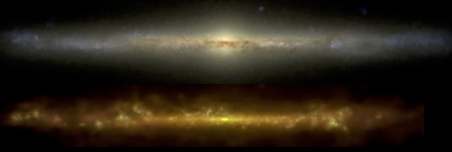Recent publication

PDRs4All: XVI. Tracing aromatic infrared band characteristics in photodissociation region spectra with PAHFIT in the JWST era
Context. Photodissociation regions (PDRs) exhibit strong emission bands between 3–20 μm known as the aromatic infrared bands (AIBs), and they originate from small carbonaceous species such as polycyclic aromatic hydrocarbons (PAHs) excited by UV radiation. The AIB spectra observed in Galactic PDRs are considered a local analog for those seen in extragalactic star-forming regions. Recently, the PDRs4All JWST program observed the Orion Bar PDR, revealing the subcomponents and profile variations of the AIBs in very high detail. Aims. We present the Python version of PAHFIT, a spectral decomposition tool that separates the contributions by AIB subcomponents, thermal dust emission, gas lines, stellar light, and dust extinction. We aim to provide a configuration that enables highly detailed decompositions of JWST spectra of PDRs (3.1–26 μm) and to test if the same configuration is suitable to characterize AIB emission in extragalactic star forming regions. Methods. We determined the central wavelength and FWHM of the AIB subcomponents by fitting selected segments of the Orion Bar spectra and compiled them into a "PDR pack" for PAHFIT. We tested the PDR pack by applying PAHFIT to the full 3.1–26 μm PDRs4All templates. We applied PAHFIT with this PDR pack and the default continuum model to seven spectra extracted from the central star forming ring of the galaxy NGC7469. Results. We introduce an alternate dust continuum model to fit the Orion Bar spectra, as the default PAHFIT continuum model mismatches the intensity at 15–26 μm. Using the PDR pack and the alternate continuum model, PAHFIT reproduces the Orion Bar template spectra with residuals of a few percent. A similar performance is achieved when applying the PDR pack to the NGC7469 spectra. We provide PAHFIT-based diagnostics that trace the profile variations of the 3.3, 3.4, 5.7, 6.2, and 7.7 μm AIBs and thus the photochemical evolution of the AIB carriers. The 5.7 μm AIB emission originates from at least two subpopulations, one more prominent in highly irradiated environments and one preferring more shielded environments. Smaller PAHs as well as very small grains or PAH clusters both thrive in the more shielded environments of the molecular zone in the Orion Bar. Based on these new diagnostics, we show and quantify the strong similarity of the AIB profiles observed in NGC7469 to the Orion Bar template spectra.




